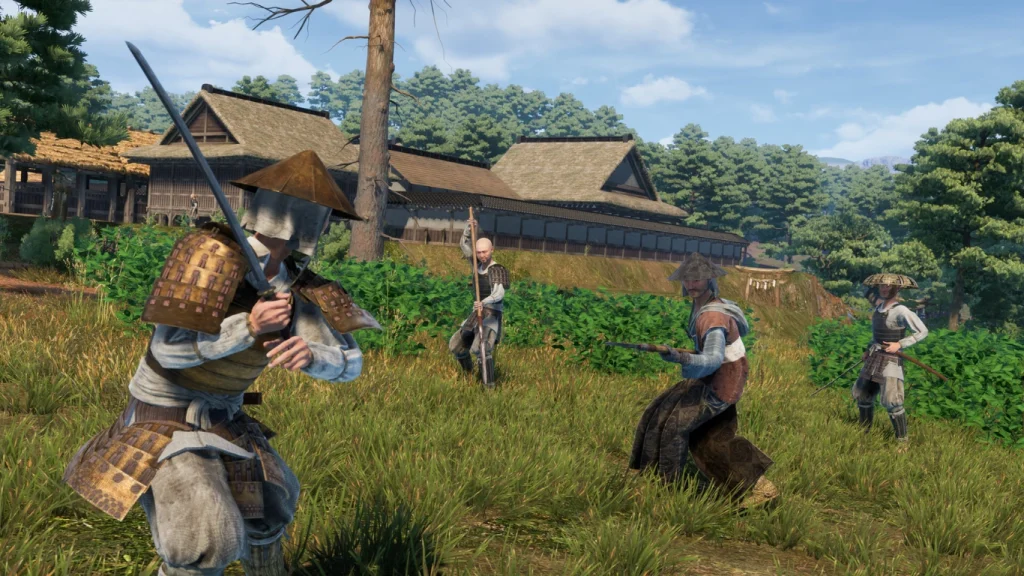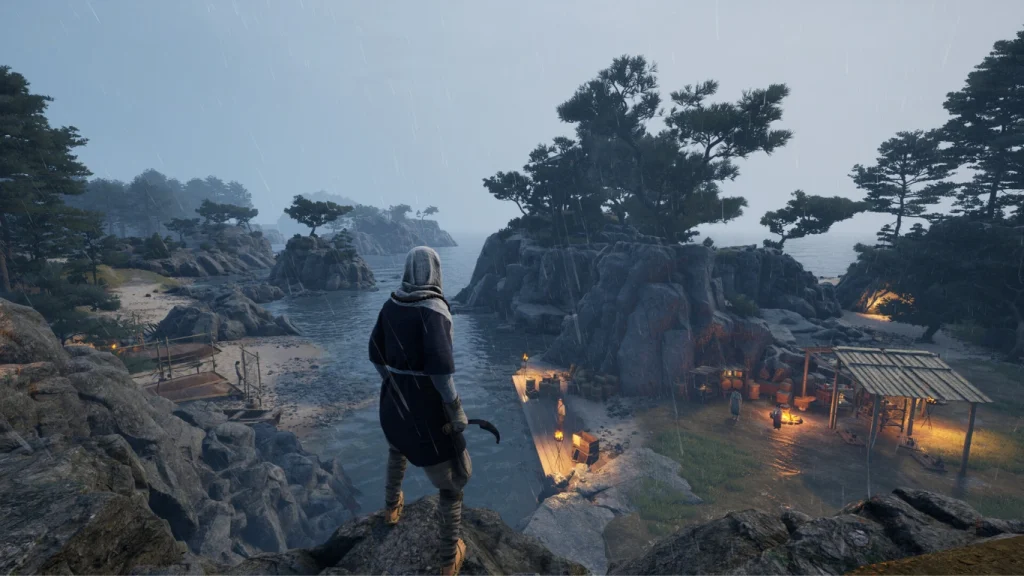7 Fascinating Facts About Sengoku Dynasty That Will Blow Your Mind

Key Takeaways
- The Sengoku Dynasty era was a brutal period of constant war in Japan, shaping the culture of weapons and strategy.
- Many Elden Ring weapons draw inspiration from real-life samurai arms, such as katanas and polearms.
- Legendary warlords of the Sengoku period influenced weapon design, names, and lore found in the game.
- The dynasty was marked by innovation in both warfare and diplomacy, much like how Elden Ring balances combat and strategy.
- Rituals, honor codes, and symbolism from this era echo through the game’s weapon lore.
- The Sengoku period wasn’t just about fighting—it also laid the foundation for art, philosophy, and cultural values that inspire fantasy worlds.
- Understanding Sengoku history makes Elden Ring’s weapons feel even richer, turning each blade into more than just pixels—it’s a piece of living history.
Paragraph
The Sengoku Dynasty wasn’t just a chaotic chapter in Japan’s history—it’s a treasure trove of inspiration for games like Elden Ring. This war-torn era, defined by legendary samurai, brutal battles, and the birth of iconic weaponry, directly influenced the swords, spears, and lore you see in-game. From katanas forged in the fires of conflict to polearms designed for ruthless battlefield tactics, every weapon carries echoes of real history. By connecting Sengoku Dynasty’s fascinating past with Elden Ring’s fantasy world, you start to see each blade not just as gear—but as a story of survival, honor, and power.
Imagine stepping into a world where every decision could make or break your future—alliances are fragile, betrayals are brutal, and the battle for power never truly ends. That’s the Sengoku era for you, a chaotic chapter in Japanese history that feels like it was ripped straight out of an epic strategy game. If you’re into rich storylines, larger-than-life characters, and the thrill of outsmarting your rivals, the Sengoku Dynasty offers a treasure trove of inspiration. Let’s dive into what makes this era so gripping, whether you’re a history buff or a gamer looking for your next obsession.
What Was the Sengoku Dynasty?
The Sengoku Dynasty refers to an era in Japan marked by relentless civil wars, where regional lords, known as daimyos, vied for control of the country. It officially began around 1467 with the Ōnin War and concluded in 1615 with the unification of Japan under the Tokugawa shogunate. This period gave rise to legendary warriors, groundbreaking military strategies, and cultural innovations.
Key Characteristics of the Sengoku Era:
- Political Fragmentation: The Ashikaga shogunate lost control, leading to decentralized power.
- Samurai Ascendance: Samurai lords became the central figures of power.
- Widespread Conflicts: Constant battles reshaped Japan’s political and social structures.
The Top 7 Facts About the Sengoku Dynasty

1. The Era of Legendary Daimyos
Also Read: Ghost of Tsushima: A Samurai’s Adventure and Strategy
The Sengoku era produced some of Japan’s most iconic leaders, including:
- Oda Nobunaga: The ruthless strategist who began Japan’s unification.
- Toyotomi Hideyoshi: Known for his brilliant diplomacy and construction projects.
- Tokugawa Ieyasu: The unifier who established the Tokugawa shogunate.
2. The Impact of the Ōnin War
The Ōnin War (1467–1477) was a decade-long conflict that plunged Japan into chaos. It:
- Destroyed Kyoto, the cultural heart of Japan.
- Weakened the central authority of the Ashikaga shogunate.
- Allowed regional lords to amass power.
3. Rise of Castle Towns
With constant warfare, daimyos fortified their territories by building castle towns. Famous examples include:
- Himeji Castle: Known as the “White Heron” for its striking beauty.
- Osaka Castle: A symbol of Toyotomi Hideyoshi’s reign.
These towns became hubs for trade, culture, and administration.
4. The Introduction of Firearms
Firearms revolutionized warfare during the Sengoku period:
- 1543: Portuguese traders introduced muskets (tanegashima) to Japan.
- Battle of Nagashino (1575): Oda Nobunaga’s innovative use of firearms crushed the Takeda cavalry.
| Year | Event | Impact |
|---|---|---|
| 1543 | Arrival of Portuguese traders | Introduction of muskets |
| 1575 | Battle of Nagashino | First major victory using firearms |
5. The Role of Religion
Also Read: Master Sekiro Shadows: 7 Powerful Tips to Conquer the Game
Religion was both a unifying and divisive force during this time:
- Buddhist Monasteries: Some became powerful militaristic forces.
- Christianity: Introduced by Jesuit missionaries, Christianity gained a foothold, especially among samurai.
- Ikko-Ikki Rebellions: Led by Buddhist sects, these uprisings challenged the authority of daimyos.
6. Cultural Flourishes Amid Chaos
Despite the warfare, the Sengoku era saw significant cultural advancements:
- Tea Ceremony: Perfected by Sen no Rikyū, emphasizing simplicity and mindfulness.
- Noh Theater: Gained popularity as a sophisticated form of entertainment.
- Art: The Kano school of painting thrived.
7. The End of the Sengoku Era
The Sengoku period ended with the Battle of Sekigahara in 1600, where Tokugawa Ieyasu emerged victorious. By 1615, Ieyasu’s forces defeated the Toyotomi clan at Osaka Castle, establishing the Tokugawa shogunate and ushering in the Edo period.
Why the Sengoku Dynasty Still Matters

The Sengoku Dynasty’s legacy lives on in modern culture, from historical dramas to video games like Total War: Shogun and Nioh. Its tales of strategy, loyalty, and ambition continue to inspire and captivate audiences worldwide.
Lessons from the Sengoku Era:
- Leadership: The importance of adaptability and vision.
- Innovation: How new technology can change the course of history.
- Resilience: Rising above chaos to achieve greatness.
Summary
The Sengoku Dynasty was a period of upheaval, innovation, and transformation. From legendary leaders to groundbreaking military strategies and cultural achievements, this era shaped the course of Japanese history. Its stories of ambition and resilience continue to resonate, making it a timeless source of inspiration.
FAQs
The Sengoku period began due to the collapse of central authority during the Ōnin War and the rise of feuding daimyos.
While opinions vary, Oda Nobunaga, Toyotomi Hideyoshi, and Tokugawa Ieyasu are often considered the most influential daimyos.
The Sengoku era ended with Tokugawa Ieyasu’s victory at the Battle of Sekigahara in 1600 and the unification of Japan by 1615.
Samurai were the military elite who served daimyos and played a pivotal role in battles and governance during the Sengoku era.






[…] Also Read: 7 Fascinating Facts About Sengoku Dynasty That Will Blow Your Mind […]
[…] Also Read: 7 Fascinating Facts About Sengoku Dynasty That Will Blow Your Mind […]